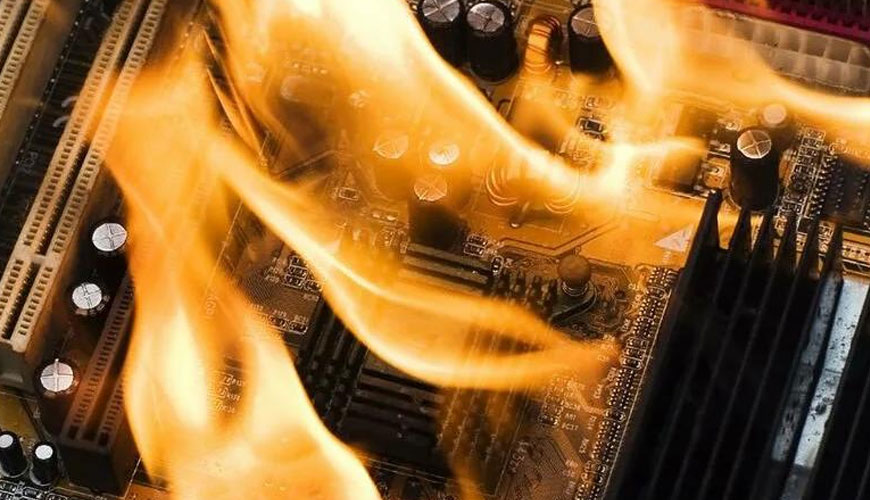

EUROLAB, with its state-of-the-art accredited laboratories and expert team, provides precise and fast testing services within the scope of IEC EN 60695-8-1 test. IEC EN 60695-8-1 provides guidance on the measurement and interpretation of heat release from electrotechnical products and the materials from which they are produced. Heat release data can be used as part of fire hazard assessment and in fire safety engineering as described in IEC EN 60695-1-11 and IEC EN 60695-1-12.

One of the responsibilities of a technical committee is to leverage key security publications in the preparation of their publications, where applicable. The requirements, test methods or test conditions of this essential safety publication will not apply unless specifically referred to or included in the relevant publications.
Fires are responsible for creating hazards to life and property as a result of heat generation (thermal hazard), toxic or corrosive compounds and darkening of vision due to smoke. The greater the radiated heat, the greater the risk of fire, possibly resulting in a flash fire.
One of the most important measurements in fire testing is the measurement of heat release and is used as an important factor in determining fire hazard; It is also used as one of the parameters in fire safety engineering calculations.
Measurement and use of heat dissipation data in conjunction with other fire test data can be used to reduce the probability (or effects) of fire even in the event of foreseeable abnormal use, failure or malfunction of electrotechnical products.
When a material is heated by an external source, fire effluent can be produced and form a mixture with air that can ignite and start a fire. The heat released in the process is carried by the fire exhaust-air mixture to produce more pyrolysis products, radiatively lost or transferred back to the solid material, thus continuing the process.
The rate at which thermal energy is released in a fire is defined as the rate of heat release. The rate of heat release is important because of its effect on flame propagation and the initiation of secondary fires. Other properties such as flammability, flame propagation and fire side effects are also important.
EUROLAB assists manufacturers with IEC EN 60695-8-1 test compliance. Our test experts, with their professional working mission and principles, provide you, our manufacturers and suppliers, the best service and controlled testing process in our laboratories. Thanks to these services, businesses receive more effective, high-performance and quality testing services and provide safe, fast and uninterrupted service to their customers.
To get an appointment, to get more detailed information or to request an evaluation, you can ask us to fill in our form and reach you.